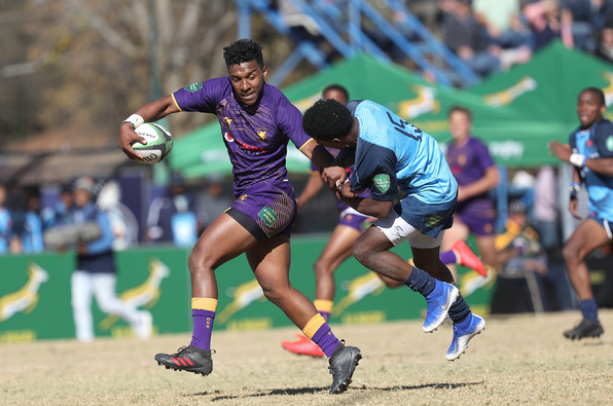The 2019 Craven Week highlighted the skills deficiencies that often cause promising schoolboys to struggle at a higher level, writes DYLAN JACK.
Another year, another entertaining set of Youth Weeks done and dusted. Matches, especially those in the U18 Craven Week, put the spotlight on the free-flowing attacking rugby that our schoolboys can play, with high-scoring games again a regular feature.
In six of the 27 games throughout Craven Week, a team scored over 50 points, while on the final day six teams scored over 40 points. In total 268 tries and 1,787 points were scored through the five days of matches in the week. That is an average of nine tries and 66 points per game.
Clearly the week is at least fulfilling a small part of Danie Craven’s original intent of having schoolboys play a festival brand of rugby.
However, one has to question how much good that does when it comes to the overall skills of many our top schoolboy players. One thing I picked up from the five days of matches was that our schoolboys still tend to be limited in a few departments, especially when comes to defence, restarts and aerial skills.
Now, it needs to be made clear that by no means do I want to see the week reduced to ‘koppestamp’ rugby, where games are slowed to a snail’s pace and boys are encouraged to get rid of the ball in fear of losing.
Having said that, it is still important that these areas are addressed. In terms of defence, one has to look at the manner in which many of those 268 tries were scored. A disturbing element was how often big ball-carriers tended to run through tackles due to poor tackle technique. There are plenty of examples to use here, but Renzo du Plessis’ 100m try for the Limpopo Blue Bulls against Griquas stands out.
You’ve got a scrum on your own five-metre line. Going backwards and under pressure. You give the ball to your flank and he decides to run the entire length of the field, beating defenders for fun, to score a simply astonishing try at #CravenWeek – take a bow Renzo du Plessis ?? pic.twitter.com/x6mhW4q9SC
— SuperSport ⚽️? (@SuperSportTV) July 2, 2019
Du Plessis is standing in the centre channel and gets the ball behind his own tryline under pressure after his team’s scrum gets shunted backwards. The flank breaks the first tackle attempt as he runs hard at the tackler’s inside shoulder, with the tackler’s meek attempt easily shrugged off.
He then uses his outstanding pace to carry him to beyond the 22 and up to the halfway line before he is met by another Griqua. However, the tackler goes in arms first, making it easy to hand him off, leaving Du Plessis with a virtually free run to the tryline.
It was one of the great tries of the tournament, and probably one of the greats in Craven Week history, but it was made possible by some shocking defensive organisation and technique from Griquas. The problem is that this entrenches a bad habit we often see in our professionals, as they are encouraged from a young age to tuck-and-run instead of keeping the ball in two hands and assess their options.
Teams also tended to struggle with their restarts and exits. Border’s narrow win over the Golden Lions on day four was mainly made possible as the Lions struggled to gather their restarts, allowing Border not only to score from the first kick-off, but constantly regain possession.
Again, this is an issue with our professional teams, especially when it comes to consolidating after they have scored.
The final point that needs to be touched on is aerial skills. In keeping with Craven Week tradition, we did not see too much in the way of tactical kicking. Admittedly, there were a couple of players who still managed to perform in this department – Bulls fullback Geraldo Flusk and Western Province flyhalf Sacha Mngomezulu chief among them.
However, it is still a slight concern that these skills are not being worked on when New Zealand and Australian schoolboys are upskilled in this department through other kicking-oriented sports such as AFL.
It’s no secret that the South African franchises still have plenty of catching up to do when comes to the kick-and-chase. The Crusaders recently demonstrated how the New Zealanders have mastered this art in the Super Rugby playoffs.
If professional South African rugby is to make up ground on New Zealand, they need schools to produce all-round players just as capable on defence and in the air as they are on attack.
Photo: Gallo Images





